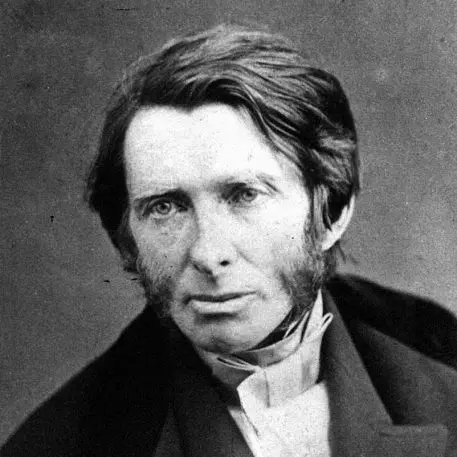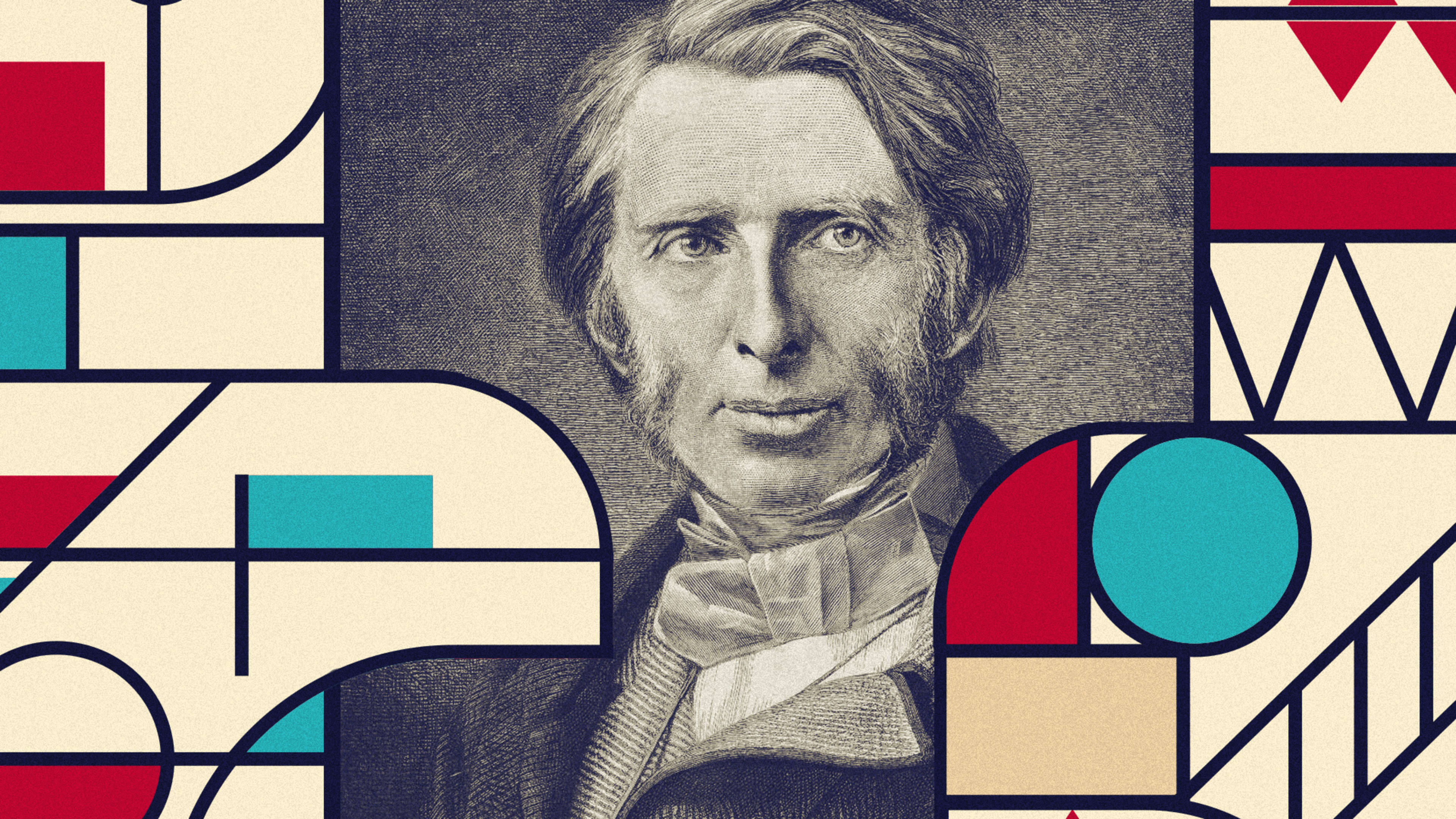Once upon a time, a young lawyer from India got on a train in England and opened a book to while away the journey. By the time he pulled in to his destination, that book had inspired him to fight for Indian independence. “This great book of Ruskin… made me transform my life,” said Mahatma Gandhi. Ruskin, a reclusive, magnificently bearded Victorian writer changed design and art forever, kicked off socialism and pretty much invented the environmental movement. As we enter an age where designers and architects are, as they were in Ruskin’s era, increasingly at the beck and call of immensely powerful barons of commerce, it’s worth revisiting some of the lessons Ruskin taught the thinkers and makers of the late 19th century. Perhaps they’ll change your life too.
Design is moral
Ugly buildings and ugly objects were, Ruskin wrote, not just an aesthetic problem. They were a symptom of a ruling class that did not care about its own people. He contrasted the ugly mill towns of the north of England with the buildings of Venice. Venice had been created to bring beauty into all its inhabitants’ lives; Victorian captains of industry hoarded pleasures away in their country mansions, breathing fresh air and enjoying art which was paid for by workers who lived in squalor and breathed filth. If you work in a dump, chances are the owners of your company don’t care about you. If you cut corners on a design, or make something complex or unpleasing to use, you’re doing more than simply being a bit lazy. You’re telling the end user of that product that they don’t matter. An economy class seat may be smaller than a first class one; that’s not a reason to skimp on the thinking or the materials that go into it: after all, it’s the thing most people are going to use.
How to see
The more you look at a mountain, the more it looks like a wave–just one that’s moving really, really slowly. Ruskin was a keen geologist (among about a zillion other things) and he was living at a time when scientists were realizing the earth was billions of years old. Stones, hills, and the sea weren’t just things to Ruskin. He saw them as parts of gigantic processes that were invisible to the human eye: “the silent wave of the blue mountain.” Ruskin saw those processes everywhere. Gothic churches weren’t just spectacular arrangements of stone, wood, and glass. They were expressions of a culture that loved individual craftsmanship: They allowed self-expression through gargoyles, grotesques, and a ton of different opportunities for workers to noodle (My favorite is a Donald Trump look-alike carved in Southwell Minster).
Proof of #endofdays? Donald Trump was carved as a gargoyle in Southwell Minster 700 years ago… pic.twitter.com/jQq0ElYvjZ
— Samira Ahmed (@SamiraAhmedUK) August 22, 2016
Ruskin paved the way for artists like JMW Turner, who painted the deep emotional realities of a subject, rather than being “true to life.” Mark Twain first thought that Turner’s great work, The Slave Ship was like, “A cat having a fit in a platter of tomatoes.” After reading Ruskin’s essay on the painting (which Ruskin actually bought), he completely changed his mind. “The picture is a manifest impossibility–that is to say, a lie; and only rigid cultivation can enable a man to find truth in a lie. But it enabled Mr. Ruskin to do it, and it has enabled me to do it, and I am thankful for it.”
Nothing, whether a rock or a can of air freshener, is simply just a thing. It has been brought into being by vast forces: psychological, physical, social, economic. Whether you like it or not, your work has meaning far beyond its purpose. If you can read those things into a painting or a Samsung watch, then thank Ruskin. If you can’t, maybe you should read him.
Tell me what you like, and I’ll tell you who you are
One day, a bunch of wealthy Bradford financiers asked Ruskin to give a lecture to them on taste in architecture, as they were building a new corn exchange. Ruskin’s lecture, immortalized as Traffic, doesn’t so much bite the hand that feeds him; it cooks it with some fava beans and a nice Chianti. He says that it doesn’t matter what his audience knows about good taste; what they build will be disgusting and vulgar because they are disgusting, vulgar people who have no aspirations beyond making money. Our taste reflects not just who we are, but who we aspire to be.
Your profession, your leisure activities, and your politics may be dictated more by circumstance than by choice. But the things that you aspire to tell us who you really are. Some kids might want to spend their spare time drawing ducks; other kids would rather throw rocks at them. If Ruskin were alive today, I think he’d be less interested in your Instagram or LinkedIn profile. He’d judge you by your Pinterest board. I’m totally with him in this. In a world where companies like Cambridge Analytica have sought to manipulate people through creepy psychological profiling, I’ve found that it’s much more productive to simply ask people what they like.

Thinkers should make and makers should think
When Ruskin looked at a medieval building, he saw a creative process where craft and design came together as one. This contrasted with the modern world of architects and builders. He said:
We want one man to be always thinking, and another to be always working, and we call one a gentleman, and the other an operative; whereas the workman ought often to be thinking, and the thinker often to be working, and both should be gentlemen, in the best sense. Now it is only by labour that thought can be made healthy, and only by thought that labour can be made happy, and the two cannot be separated with impunity.
Look at Jony Ive’s intimacy with the materials and milling machines that create every Apple laptop. He recently said, “I think you only really understand a material—its properties and attributes and, importantly, the opportunity the material allows—if you actually work it yourself.”
Or take Toyota, which became a dominant player in the car market because its factories were constantly redesigned by its assembly line workers, and every member of management had to be able to work any machine on the line. It’s heartening to see that the more digitized design has become, the more the maker movement has grown. The best designers have dirt under their fingernails; the best craftspeople have a pencil behind their ear.
Just do it
In 1874, a road that led into Oxford was making people sick. It was falling apart, the ditches weren’t draining, and it had become a cesspool. Nobody took responsibility. So the Professor of Fine Art handed a shovel to each of his students and they undertook the disgusting and back-breaking work of widening and restoring it. The University was scandalized. Punch magazine mocked them. The professor was (you guessed it) John Ruskin. The students included future intellectual giants Arnold Toynbee, Hardwicke Rawnsley and, incredibly, Oscar Wilde. When his lectures became overwhelmingly popular, Ruskin moved to a bigger venue and blew up images of the paintings by projecting them on a wall using limelight; he basically invented the TED talk in 1870. Ruskin has been portrayed in a few films recently as a fop and an austere intellectual. In real life, he was a guy who got out and became–in the words of his famous Indian disciple–the change in the world he wanted to see.
Ruskin had a vision of a world that was designed for everybody to enjoy. The key word here is designed: He saw great design as something public and democratic. In his most controversial work (and the best place to start if you want to read Ruskin for yourself) Unto This Last, Ruskin put it like this: “Luxury is indeed possible in the future–innocent and exquisite; luxury for all, and by the help of all; but luxury at present can only be enjoyed by the ignorant; the cruellest man living could not sit at his feast, unless he sat blindfolded.”
We live in an age where design has created mass luxury in ways Ruskin couldn’t have imagined, from TJ Maxx to Ikea. When we learn to see those luxuries with Ruskin’s eyes, we begin to see the other costs designed into them: social, economic, and environmental. The challenge for the next generation of designers is to make products that benefit the people who make them and the planet that sustains us. A guy born 200 years ago this week has some pretty fresh ideas about how we might do that.
Brian Millar is the cofounder of Paddle Consulting, a company that collects data about the things that people love on the internet. @paddlepowered
Recognize your brand’s excellence by applying to this year’s Brands That Matter Awards before the early-rate deadline, May 3.
